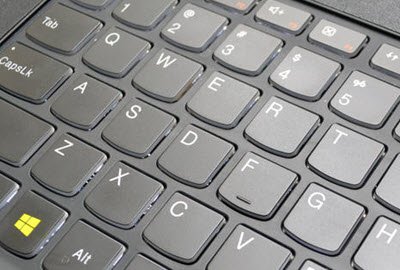This post lists the Windows 10 Keyboard Shortcuts for CMD, Dialog boxes, File Explorer, Continuum, Surface Hub, Ease of Access, Settings, Taskbar, Magnifier, Narrator, Windows Store Apps, WinKey, Virtual Desktops, etc.
Keyboard Shortcuts for Windows 10

Let us check out this list, sourced from Microsoft.
Keyboard Shortcut
|
Action
|
|---|---|
|
F2 |
Rename the selected item |
|
F3 |
Search for a file or folder in File Explorer |
|
F4 |
Display the address bar list in File Explorer |
|
F5 |
Refresh the active window |
|
F6 |
Cycle through screen elements in a window or on the desktop |
|
F10 |
Activate the Menu bar in the active app |
|
Alt+F4 |
Close the active item, or exit the active app |
|
Alt+Esc |
Cycle through items in the order in which they were opened |
|
Alt+underlined letter |
Perform the command for that letter |
|
Alt+Enter |
Display properties for the selected item |
|
Alt+Spacebar |
Open the shortcut menu for the active window |
|
Alt+Left arrow |
Go back |
|
Alt+Right arrow |
Go forward |
|
Alt+Page Up |
Move up one screen |
|
Alt+Page Down |
Move down one screen |
|
Alt+Tab |
Switch between open apps |
|
Ctrl+F4 |
Close the active document |
|
Ctrl+A |
Select all items in a document or window |
|
Ctrl+C (or Ctrl+Insert) |
Copy the selected item |
|
Ctrl+D (or Delete) |
Delete the selected item and move it to the Recycle Bin |
|
Ctrl+R (or F5) |
Refresh the active window |
|
Ctrl+V (or Shift+Insert) |
Paste the selected item |
|
Ctrl+X |
Cut the selected item |
|
Ctrl+Y |
Redo an action |
|
Ctrl+Z |
Undo an action |
|
Ctrl+Right arrow |
Move the cursor to the beginning of the next word |
|
Ctrl+Left arrow |
Move the cursor to the beginning of the previous word |
|
Ctrl+Down arrow |
Move the cursor to the beginning of the next paragraph |
|
Ctrl+Up arrow |
Move the cursor to the beginning of the previous paragraph |
|
Ctrl+Alt+Tab |
Use the arrow keys to switch between all open apps |
|
Ctrl+Alt+Shift+arrow keys |
When a group or tile is in focus in the Start menu, move it in the direction specified |
|
Ctrl+arrow key (to move to an item)+Spacebar |
Select multiple individual items in a window or on the desktop |
|
Ctrl+Shift with an arrow key |
Select a block of text |
|
Ctrl+Esc |
Open Start |
|
Ctrl+Shift+Esc |
Open Task Manager |
|
Ctrl+Shift |
Switch the keyboard layout when multiple keyboard layouts are available |
|
Ctrl+Spacebar |
Turn the Chinese input method editor (IME) on or off |
|
Shift+F10 |
Display the shortcut menu for the selected item |
|
Shift with any arrow key |
Select more than one item in a window or on the desktop, or select text within a document |
|
Shift+Delete |
Delete the selected item without moving it to the Recycle Bin first |
|
Right arrow |
Open the next menu to the right, or open a submenu |
|
Left arrow |
Open the next menu to the left, or close a submenu |
|
Esc |
Stop or leave the current task |
Windows 10 Anniversary Update introduces two new shortcuts:
- WinKey+Alt+D : Opens Date & Time
- WinKey+Shift+C : Opens Cortana
Want even more? Check out these post which lists keyboard shortcuts for specific areas:
- Windows 11 Keyboard shortcuts
- New WinKey Keyboard Shortcuts in Windows 10
- File Explorer keyboard shortcuts
- Windows 10 Ease of Access and Settings keyboard shortcuts
- CTRL commands or keyboard shortcuts
- CMD or Command Prompt keyboard shortcuts
- Microsoft Surface Hub keyboard shortcuts
- Keyboard Shortcuts for Taskbar and Virtual Desktops
- Keyboard shortcuts for Narrator & Magnifier
- Continuum keyboard shortcuts.
Source: Microsoft.
If you are a keyboard junkie, these posts are sure to interest you too!